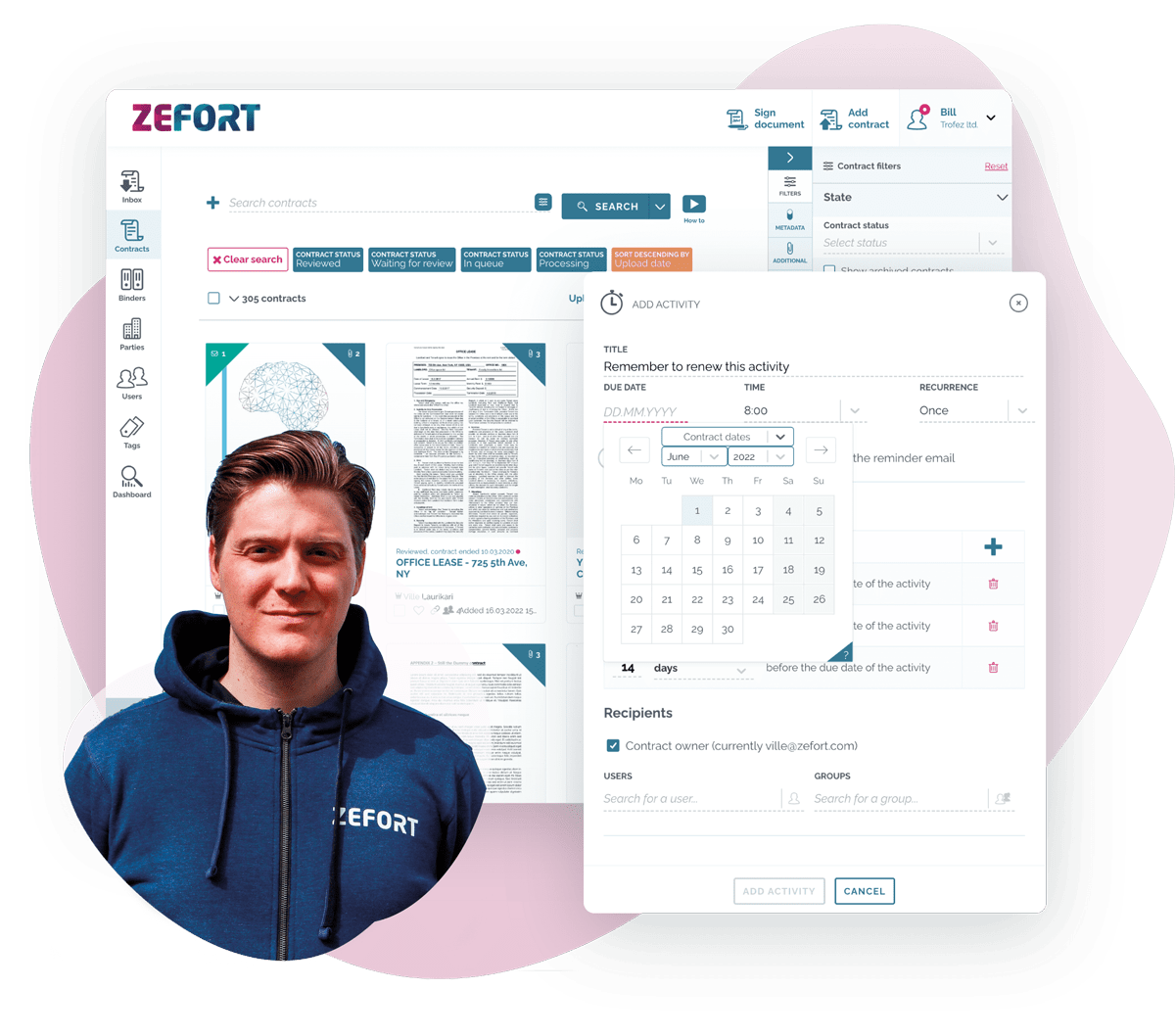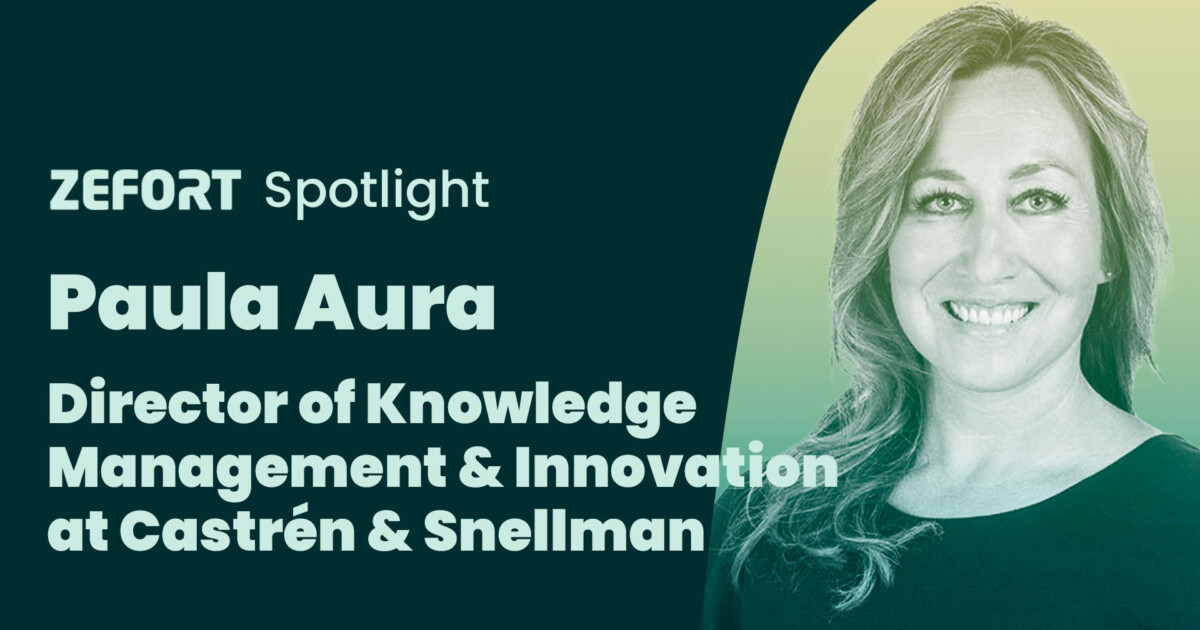Are you tired of drowning in a sea of paper contracts? Frustrated with the never-ending back-and-forth negotiations? Look no further than contract lifecycle management (CLM) to save the day! This game-changing combination of process and technology is here to revolutionize the way businesses handle contracts, making the entire process smoother, more efficient, and stress-free.
In this article, we’ll explore ten compelling reasons why adopting contract lifecycle management is the best decision you’ll make for your business. Bid farewell to lost agreements, time-consuming manual tasks, and countless sleepless nights. With CLM, you can finally experience a contract management utopia!
What is Contract Lifecycle Management (CLM)?
Contract Lifecycle Management refers to the process of effectively managing every stage of a contract, from its creation to its execution and renewal. It involves key activities such as drafting, negotiation, approval, monitoring, and analysis. CLM is designed to streamline and optimize the contract management process, improving efficiency, reducing risks, and increasing compliance.
By implementing a CLM system and process, organizations can gain better control and visibility over their contracts, ensuring that they are effectively managed and monitored throughout their lifecycle. This enables businesses to mitigate risks, maintain regulatory compliance, and maximize the value of their contractual relationships.
Importance of CLM in Today’s Business Environment
Contract Lifecycle Management is vital in today’s business environment. It streamlines contract processes, ensuring efficiency and compliance. With CLM, organizations can easily create, negotiate, and manage contracts, reducing manual errors and saving time. Plus, it enables better visibility and control over contract performance, helping businesses identify opportunities and mitigate risks.
For example, CLM tools provide real-time insights into contract expiration dates, allowing companies to proactively renew or terminate agreements. By adopting CLM, businesses can optimize their contract management practices, enhance collaboration, and improve overall business performance.
Benefits of Contract Lifecycle Management Adoption
Improved Efficiency and Productivity
Improved efficiency and productivity are direct outcomes of contract lifecycle management adoption. By automating manual processes and streamlining workflows, organizations can save time and reduce human errors.
For example, the use of digital contract templates and automated approval workflows speeds up the contract creation and review process. Moreover, contract management software provides easy access to contracts and relevant documents, enabling teams to quickly locate information and make informed decisions. These efficiencies result in increased productivity, allowing organizations to handle a higher volume of contracts and focus on more strategic tasks.
Streamlined Contract Creation Process
A streamlined contract creation process is crucial for successful contract lifecycle management adoption. By automating manual processes and using templates and standardized language, contracts can be created quickly and consistently.
For example, implementing document generation software can simplify the process by automatically populating contracts with relevant information, reducing the risk of data entry errors. Streamlining the creation process also allows stakeholders to collaborate more effectively, ensuring that contracts meet all necessary requirements and terms are negotiated efficiently.
Automated Approval Workflows
Automated approval workflows streamline the contract lifecycle management process, reducing manual effort and increasing efficiency. With these workflows, organizations can automate the review and approval process for contracts, eliminating the need for lengthy email chains and manual tracking.
For example, when a contract is ready for approval, it can be automatically routed to the appropriate stakeholders based on predefined rules and criteria. This ensures that contracts are reviewed and approved in a timely manner, reducing bottlenecks and accelerating contract execution. By implementing automated approval workflows, organizations can save time, reduce errors, and improve overall contract management efficiency.
Enhanced Contract Visibility and Compliance
Enhanced contract visibility and compliance are integral aspects of contract lifecycle management adoption. With improved visibility into contract data, organizations can easily track key milestones, obligations, and risks, reducing the chance of missed deadlines or non-compliance. By implementing CLM software, businesses gain real-time insights into contract status, allowing them to proactively manage renewals, renegotiations, and amendments.
Furthermore, automated alerts and notifications ensure that relevant stakeholders are informed about upcoming contract events, guaranteeing timely action. For instance, teams can receive reminders for contract expirations, enabling them to negotiate new terms or terminate agreements if necessary. Enhanced contract visibility and compliance contribute to overall efficiency, risk reduction, and improved decision-making, ultimately enabling organizations to maximize the value of their contracts.
Centralized Contract Repository
A centralized contract repository is a fundamental component of a successful contract lifecycle management strategy. It enables organizations to store and manage contracts in a centralized location, ensuring accessibility, visibility, and control throughout the contract lifecycle. This repository serves as a single source of truth for all contract-related information, allowing for efficient contract management and minimizing the risk of contract mismanagement or loss.
By consolidating contracts in one place, organizations can easily search, retrieve, and analyze contract data, facilitating informed decision-making.
Additionally, a centralized contract repository enhances collaboration among stakeholders, enabling seamless contract review and approval processes.
Standardized Contract Templates and Clauses
Standardized contract templates and clauses serve as starting points for drafting contracts, saving time and effort for legal teams. By using standardized templates, organizations can ensure consistency in the terms and conditions across their contracts. This minimizes the risk of errors and disputes, and streamlines the contract review and negotiation process.
Furthermore, standardized clauses enable organizations to address common legal issues efficiently.
For example, a force majeure clause can be included to handle unforeseen events that may impact contract performance. Implementing standardized contract templates and clauses improves efficiency and reduces legal risks in contract management.
Reduction of Legal and Financial Risks
Adopting contract lifecycle management helps to reduce legal and financial risks. With CLM, organizations can efficiently manage contracts, ensuring compliance with legal and regulatory requirements. By automating processes like contract creation, review, and renewal, CLM minimizes the chances of errors, missed deadlines, and non-compliant terms.
Additionally, CLM provides organizations with improved visibility and control over contract terms and conditions, reducing the likelihood of costly disputes and misunderstandings. By streamlining the contract management process, CLM enables organizations to mitigate risks and make informed decisions based on accurate and up-to-date contract data.
Improved Contract Negotiation and Review
Improved contract negotiation and review is a vital aspect of contract lifecycle management adoption. It enables organizations to enhance their contracting processes by streamlining workflows, reducing turnaround times, and minimizing risks. By utilizing advanced contract management software, businesses can automate the contract review process, identify potential issues and discrepancies, and ensure compliance with legal and regulatory requirements.
This not only saves time and resources but also improves the overall quality of contracts.
For example, machine learning algorithms can analyze large volumes of contracts and extract relevant information, enabling organizations to gain valuable insights and make informed decisions during the negotiation phase.
Effective Risk Mitigation Strategies
Effective risk mitigation strategies are crucial for successful contract lifecycle management adoption. One strategy is conducting a thorough risk assessment to identify potential risks and their impact on organizational goals. This analysis helps to prioritize risks and allocate appropriate resources for mitigation. Another strategy is implementing robust contract monitoring and reporting processes to track performance and identify any deviations from agreed-upon terms.
Regular contract reviews and audits also help to identify potential risks and ensure compliance with contractual obligations. By implementing these strategies, organizations can minimize the impact of risks and enhance their contract management practices.
Cost Savings and Time Optimization
Cost savings and time optimization are major benefits of adopting contract lifecycle management. By centralizing and automating contract management processes, organizations can reduce manual effort and reduce the risk of errors. This streamlines the entire contract lifecycle, from initiation to renewal, enabling teams to complete tasks faster and more efficiently.
For example, with CLM, teams can easily access and search for contract information, eliminating the need for time-consuming manual searches. In addition, CLM can identify cost-saving opportunities by highlighting contract terms that can be renegotiated or terminated. This helps organizations optimize their spending and negotiate better terms with vendors or suppliers.
Elimination of Manual Processes
By adopting contract lifecycle management tools, organizations can eliminate manual processes, leading to increased efficiency and reduced errors. Manual processes, such as manually tracking contract expiration dates or manually inputting data into spreadsheets, are not only time-consuming but also prone to mistakes. With CLM, organizations can automate these processes, freeing up valuable time and resources.
For example, CLM software can automatically send reminders for contract renewals or generate reports with updated contract information. By eliminating manual processes, organizations can streamline their contract management workflows and improve overall productivity.
Faster Contract Turnaround Times
One crucial aspect of contract lifecycle management adoption is the ability to achieve faster contract turnaround times. By streamlining the contract creation, review, and approval processes, organizations can save valuable time and improve overall efficiency. Technology solutions that automate these processes and provide collaboration features can significantly reduce the time it takes to review and finalize contracts.
For example, a workflow automation tool can automatically route contracts to the right stakeholders for review and approval, eliminating manual handoffs and reducing delays. By prioritizing faster contract turnaround times, organizations can accelerate business deals and enhance their competitive edge.
Improved Supplier and Vendor Relationships
Improved supplier and vendor relationships are an integral component of successful contract lifecycle management adoption. Building strong partnerships with suppliers and vendors fosters trust, leading to better collaboration and mutual understanding of expectations. This ultimately results in improved contract performance and reduced risks.
For example, regular communication and feedback exchanges help identify and address potential issues early on, ensuring timely delivery of goods and services.
Additionally, fostering transparent and open relationships encourages innovation and enables organizations to leverage the expertise of their suppliers and vendors in creating value-added solutions.
Efficient Contract Monitoring and Performance Evaluation
Efficient contract monitoring and performance evaluation are vital for successful contract lifecycle management adoption. Regularly monitoring the progress of contracts enables organizations to identify potential risks or issues early on and take appropriate action. This ensures that contracts are executed as intended and that all parties deliver on their obligations.
Performance evaluation helps measure the outcomes and assess the value derived from contracts, allowing organizations to make informed decisions for future contract negotiations.
For example, monitoring contract milestones and deliverables can help identify any discrepancies or delays, enabling prompt resolution. Conducting regular performance evaluations also provides valuable insights into vendor performance, enabling organizations to identify areas for improvement and drive better vendor management.
Optimized Contract Renewal and Expiry Management
Optimized contract renewal and expiry management is a fundamental aspect of contract lifecycle management adoption. By implementing effective processes, organizations can ensure timely renewal of contracts and avoid the risks associated with expired contracts. This includes establishing a centralized repository to track contract expiration dates, setting up automated notifications for renewals, and conducting regular audits to identify contracts that need attention.
For instance, a company can use software tools to proactively monitor contract expiration dates and send reminders to relevant stakeholders when a contract is nearing its end. This practical approach ensures that organizations stay compliant, mitigate potential legal risks, and maintain strong vendor relationships.
Better Contract Negotiations and Deal Management
Better contract negotiations and deal management are integral to successful contract lifecycle management adoption. Effective negotiations can lead to favorable terms and conditions, minimizing risks and maximizing the value of the contract. It is crucial to thoroughly analyze the contract terms, identify potential areas of contention, and leverage negotiation strategies to secure the best deal.
For instance, conducting market research to compare prices and using benchmarking data can help negotiate better pricing terms. Furthermore, clear communication, active listening, and compromise are key to fostering positive relationships with the other party, ultimately leading to successful contract outcomes.
Real-time Collaboration and Communication
Real-time collaboration and communication are vital for successful contract lifecycle management adoption. Effective communication ensures that all stakeholders are informed and can provide input throughout the process. By collaborating in real-time, teams can address issues quickly and make decisions promptly, reducing delays and increasing efficiency.
For example, using collaborative tools allows legal teams to work simultaneously on contract amendments, eliminating the need for lengthy back-and-forth email exchanges.
Additionally, real-time communication enables clear and immediate feedback, promoting transparency and accountability. To streamline the contract management process, organizations should prioritize implementing real-time collaboration and communication tools.
Effective Contract Amendment and Extension
This topic involves properly addressing changes in scope, timelines, pricing, and terms to ensure the contract remains relevant and aligned with evolving business needs.
One practical example of effective contract amendment is when parties negotiate and agree on revised terms for extended product delivery dates due to unforeseen delays. Similarly, a well-executed extension example is when parties mutually agree to extend an existing contract duration to accommodate additional deliverables or services.
By actively managing and executing contract amendments and extensions, organizations can maintain strong contractual relationships, minimize disputes, and optimize business outcomes.
Scalability and Flexibility for Growing Businesses
Scalability and flexibility are crucial for growing businesses adopting contract lifecycle management. Scalability allows businesses to handle an increasing number of contracts and users without compromising performance. It ensures that the CLM system can accommodate growth and meet evolving needs. Flexibility, on the other hand, enables businesses to adapt the CLM system to their specific requirements and workflows.
This allows businesses to customize the system and integrate it with existing tools and processes.
For example, a scalable and flexible CLM system can easily scale up to handle a higher volume of contracts as a business expands, while also allowing users to customize fields, templates, and approval workflows to align with their unique processes.
Adaptability to Changing Business Needs
Adaptability to changing business needs is vital for successful contract lifecycle management adoption. As businesses evolve, their requirements for contract management also change. An adaptable CLM solution enables organizations to modify and customize their workflows, templates, and processes according to these evolving needs. For instance, when a company expands globally, it may require multi-language capabilities in its CLM system to cater to different regions.
Similarly, if a business undergoes a merger or acquisition, the CLM solution should be flexible enough to integrate with new systems seamlessly. The ability to easily adapt and scale CLM processes ensures long-term effectiveness and efficiency in contract management.
Ability to Handle Increasing Contract Volumes
The ability to handle increasing contract volumes is a crucial factor in successful contract lifecycle management adoption. As organizations grow and expand, the number of contracts they manage also tends to increase. Without the proper systems and processes in place, managing a larger volume of contracts can become overwhelming and prone to errors. By implementing robust contract management software, organizations can automate repetitive tasks, streamline workflows, and improve efficiency.
Improved Regulatory Compliance and Auditability
Improved regulatory compliance and auditability is a notable benefit of contract lifecycle management adoption. With CLM, organizations can easily generate accurate and comprehensive reports on contract terms, obligations, and key dates. This allows for a more effective monitoring and enforcement of regulatory requirements, reducing the risk of non-compliance.
In addition, CLM’s centralized repository enables better visibility and accessibility of contract information, facilitating efficient audits. For instance, auditors can quickly locate and review contract policies and documentation, ensuring adherence to regulatory standards. By utilizing CLM, businesses can demonstrate their commitment to regulatory compliance and are better equipped to handle audits.
Automated Compliance Monitoring
Automated compliance monitoring is a vital component of contract lifecycle management adoption. It enables organizations to efficiently track and analyze adherence to contractual obligations and regulatory requirements. Through automated systems, companies can effortlessly monitor contract terms, identify potential risks, and ensure compliance with applicable laws and policies.
For example, automated compliance monitoring can promptly flag any discrepancies between contract deliverables and actual performance, allowing businesses to take corrective action promptly.
Additionally, it streamlines audits and regulatory reporting by generating accurate and comprehensive compliance reports.
Easy Retrieval of Contractual Information
Easy retrieval of contractual information is a fundamental aspect of successful contract lifecycle management adoption. Having a centralized system in place that allows users to quickly access and search for specific contract details is crucial. For instance, the ability to search contracts based on keywords, dates, or clauses enables users to find relevant information efficiently.
Additionally, using automated metadata tagging can enhance search capabilities and streamline the retrieval process. By simplifying the retrieval of contractual information, organizations can save time, reduce manual effort, and improve overall contract management efficiency.
Strategic Decision Making and Analytics
Strategic decision making and analytics are integral to successful contract lifecycle management adoption. By leveraging data-driven insights, organizations can make informed decisions throughout the entire contract lifecycle. Analytics enable businesses to identify trends, risks, and opportunities, allowing them to optimize contract performance and mitigate potential problems.
For example, analytics can help identify patterns in contract negotiation and identify areas where negotiations tend to stall, enabling organizations to streamline and speed up the process.
Data-driven Insights and Reporting
Data-driven insights and reporting are instrumental in the adoption of contract lifecycle management. By leveraging data analytics, businesses can gain valuable insights into their contract workflows, identify bottlenecks, and enhance overall efficiency.
For example, analyzing contract performance data can reveal patterns and trends in contract negotiations, leading to optimized deal terms.
Additionally, reporting on contract metadata enables organizations to track contracts across their lifecycle and ensure compliance with regulatory requirements. These insights empower businesses to make informed decisions, improve contract management processes, and maximize value from their contracts. Adopting data-driven practices is integral to driving success in CLM implementation.
Identifying Opportunities for Improving Contract Terms
Identifying opportunities for improving contract terms is a vital aspect of contract lifecycle management adoption. By carefully scrutinizing existing contract terms, organizations can uncover areas for optimization and negotiation.
For example, they can identify clauses that may be too favorable to the other party and renegotiate more equitable terms.
Additionally, organizations can analyze historical contract data to identify common pitfalls and develop strategies to mitigate future risks. By continuously monitoring and reviewing contract terms, companies can refine and improve their contract management processes, ensuring more favorable outcomes and mitigating potential legal and financial risks.
Wrapping up
Contract lifecycle management offers organizations numerous benefits that can improve efficiency, mitigate risks, and drive cost savings. From ensuring compliance with regulations to streamlining contract creation and approval processes, CLM provides enhanced visibility and control over contracts throughout their lifecycle. It also facilitates collaboration, reduces disputes, and enables better negotiating positions.
Furthermore, CLM helps organizations monitor contract performance, identify opportunities for optimization, and manage renewals effectively. By adopting CLM tools and processes, businesses can significantly enhance their contract management practices and achieve better outcomes.





